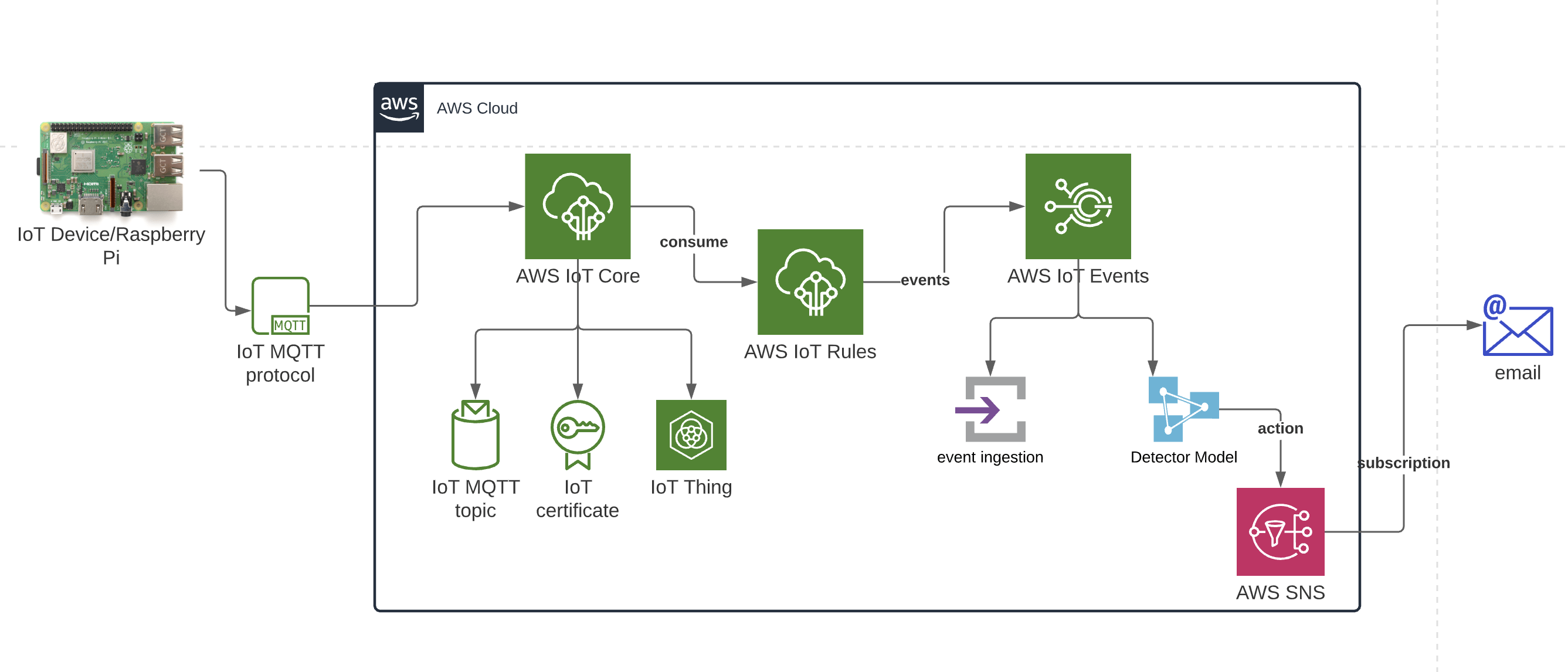Establishing a secure connection between remote IoT devices and AWS through a Raspberry Pi is essential for businesses and individuals looking to harness the power of cloud computing in their IoT projects. As IoT adoption continues to grow, ensuring that communication between devices and cloud infrastructure remains both secure and reliable has become a top priority. This article will guide you step-by-step on how to securely connect a Raspberry Pi to an AWS Virtual Private Cloud (VPC), ensuring your data stays protected and your systems function efficiently.
In today’s rapidly evolving digital landscape, IoT devices are becoming increasingly integrated into our daily lives, from smart homes to sophisticated industrial automation systems. However, this integration introduces significant challenges, particularly in managing and transmitting data securely between IoT devices and cloud platforms such as AWS. By learning how to securely connect your Raspberry Pi to AWS VPC, you can significantly reduce risks and safeguard the integrity of your IoT projects.
This comprehensive guide will provide detailed instructions, best practices, and expert insights to help you establish a secure connection between your Raspberry Pi and AWS VPC. Whether you're new to IoT or an experienced developer, this article will equip you with the necessary knowledge and tools to build a robust and secure IoT infrastructure. You'll gain valuable insights into maintaining and optimizing your IoT setup for long-term success.
Read also:Tia Mowry A Journey Of Strength Healing And Hope
Table of Contents
- Introduction to IoT and AWS
- Understanding VPC in AWS
- Raspberry Pi as an IoT Device
- Setting Up AWS IoT Core
- Configuring VPC for Secure Connections
- Establishing a Secure Connection
- Best Practices for Secure IoT Connections
- Monitoring and Maintaining Your IoT Setup
- Troubleshooting Common Issues
- Conclusion and Next Steps
Introduction to IoT and AWS
The Internet of Things (IoT) is a network of interconnected devices capable of communicating and exchanging data over the internet. These devices, ranging from simple sensors to highly complex machines, are utilized across various industries, including healthcare, agriculture, and manufacturing. AWS (Amazon Web Services) offers a robust suite of tools and services designed to support IoT projects. Among these, AWS IoT Core stands out as a managed service enabling secure communication between IoT devices and the cloud.
AWS IoT Core is engineered to connect billions of IoT devices and route trillions of messages to AWS services without requiring the management of underlying infrastructure. It supports secure communication protocols such as MQTT and HTTPS, ensuring that all data transmitted between devices and the cloud is encrypted and protected from unauthorized access. This feature is crucial for maintaining the privacy and security of your IoT ecosystem.
Leveraging AWS IoT Core allows you to develop scalable and secure IoT applications that seamlessly integrate with other AWS services, such as Lambda, DynamoDB, and S3. This integration not only enhances data processing and storage but also provides valuable insights that drive innovation in your projects. By utilizing AWS IoT Core, you can efficiently process, store, and analyze IoT data, leading to more informed decision-making and improved project outcomes.
Understanding VPC in AWS
A Virtual Private Cloud (VPC) represents a logically isolated segment of the AWS cloud where you can launch AWS resources within a virtual network that you define. A VPC allows you complete control over your network settings, including IP address ranges, subnets, route tables, and network gateways, thereby creating a secure and highly customizable environment for your applications.
When connecting IoT devices like a Raspberry Pi to AWS, utilizing a VPC ensures that your data remains private and secure. You can configure your VPC to restrict access to specific IP addresses or subnets, implement network access control lists (ACLs), and use security groups to control both inbound and outbound traffic. These configurations significantly enhance the security of your IoT infrastructure by limiting potential vulnerabilities.
AWS also provides tools such as VPC endpoints and AWS PrivateLink, which enable private connectivity between your VPC and other AWS services. These tools help reduce exposure to the public internet, thereby enhancing the overall security of your IoT setup. Understanding how to configure and manage your VPC is essential for building a secure and efficient IoT infrastructure that meets your project's needs.
Read also:Discover The World Of Advertising With Hdhub4u
Raspberry Pi as an IoT Device
The Raspberry Pi is a highly versatile and cost-effective single-board computer widely adopted for IoT projects. Its compact design, low power consumption, and support for various programming languages make it an ideal choice for building IoT applications. Whether you're monitoring environmental conditions, automating home systems, or collecting data from sensors, the Raspberry Pi can serve as the backbone of your IoT setup.
Below is a table summarizing the key specifications of the Raspberry Pi 4, one of the most popular models for IoT projects:
| Specification | Details |
|---|---|
| Processor | Quad-core Cortex-A72 (ARM v8) 64-bit SoC @ 1.5GHz |
| Memory | 2GB, 4GB, or 8GB LPDDR4 |
| Connectivity | Wi-Fi, Bluetooth, Gigabit Ethernet |
| Ports | 2x USB 3.0, 2x USB 2.0, HDMI, GPIO |
| Operating System | Raspberry Pi OS, Ubuntu, and others |
To utilize the Raspberry Pi as an IoT device, you'll need to install an operating system, configure network settings, and install the necessary software libraries for communication with AWS services. This setup will enable your Raspberry Pi to establish a secure connection with AWS VPC and transmit data to the cloud, ensuring seamless integration with your IoT ecosystem.
Setting Up AWS IoT Core
AWS IoT Core serves as the foundation of your IoT infrastructure, enabling secure communication between your Raspberry Pi and AWS services. Setting up AWS IoT Core involves a series of straightforward steps:
- Create an AWS account if you haven't already.
- Navigate to the AWS IoT Core console and create a new IoT thing to represent your Raspberry Pi.
- Generate and download the necessary certificates and keys to facilitate secure communication.
- Install the AWS IoT SDK on your Raspberry Pi and configure it to use the downloaded credentials.
Once configured, your Raspberry Pi will be capable of sending and receiving messages using MQTT, a lightweight protocol specifically designed for IoT applications. AWS IoT Core also features device shadowing, which allows you to store and retrieve the state of your IoT devices even when they are offline. This functionality ensures that your IoT setup remains responsive and reliable, even during periods of intermittent connectivity.
Configuring VPC for Secure Connections
To ensure secure communication between your Raspberry Pi and AWS VPC, it's essential to carefully configure your VPC settings. Below are the key steps involved:
Create a VPC
Using the AWS Management Console, create a new VPC with a custom IP address range. Define subnets for your IoT devices and configure route tables to control traffic flow. This step ensures that your IoT devices operate within a secure and isolated environment, minimizing potential security risks.
Set Up Security Groups
Security groups function as virtual firewalls for your VPC, controlling both inbound and outbound traffic. Create a security group for your IoT devices and specify rules to allow only necessary traffic, such as MQTT communication. By carefully configuring security groups, you can significantly enhance the security of your IoT infrastructure.
Enable VPC Endpoints
VPC endpoints allow you to connect your VPC to AWS services privately, without relying on the public internet. Enable endpoints for AWS IoT Core and other services your IoT application depends on. This configuration ensures that your IoT devices communicate securely with AWS services, reducing exposure to potential threats.
By following these steps, you can create a secure and isolated environment for your IoT devices, effectively minimizing the risk of unauthorized access and data breaches.
Establishing a Secure Connection
After configuring your VPC and AWS IoT Core, the next step is to establish a secure connection between your Raspberry Pi and AWS. Follow these steps to ensure a successful connection:
- Install the AWS IoT SDK on your Raspberry Pi and configure it with the certificates and keys downloaded from AWS IoT Core.
- Use the SDK to connect your Raspberry Pi to AWS IoT Core using MQTT or HTTPS.
- Test the connection by sending a sample message from your Raspberry Pi to AWS and verifying that it is received successfully.
Ensure that your Raspberry Pi's network settings are configured to use the VPC's private IP address range, and confirm that traffic is routed through the VPC endpoints for enhanced security. This configuration ensures that your IoT devices operate within a secure and isolated environment, protecting your data and maintaining the integrity of your IoT setup.
Best Practices for Secure IoT Connections
To maintain a secure IoT infrastructure, consider implementing the following best practices:
- Regularly update the firmware and software on your Raspberry Pi to address vulnerabilities and ensure compatibility with the latest security protocols.
- Use strong, unique passwords for all accounts and enable multi-factor authentication (MFA) where possible to enhance account security.
- Monitor your IoT devices and network traffic for unusual activity using AWS CloudWatch and other monitoring tools. This vigilance helps identify potential security risks and ensures prompt response to any anomalies.
- Encrypt data both at rest and in transit using AWS Key Management Service (KMS) to protect sensitive information from unauthorized access.
By adhering to these best practices, you can significantly reduce the risk of security breaches and ensure the long-term reliability and security of your IoT setup.
Monitoring and Maintaining Your IoT Setup
Monitoring and maintaining your IoT infrastructure is essential for ensuring its performance and security. AWS offers several powerful tools to help you monitor your IoT devices and applications:
- AWS CloudWatch: Monitor metrics, logs, and alarms to detect and respond to issues in real-time, ensuring optimal performance and security.
- AWS IoT Device Defender: Audit and monitor device configurations to identify potential security risks and take corrective action as needed.
- AWS IoT Analytics: Analyze IoT data to gain valuable insights and optimize your applications, driving innovation and efficiency in your IoT projects.
Regularly review your VPC and security group settings to ensure they align with your current requirements. Perform routine backups of critical data and test your disaster recovery plan to ensure business continuity in the event of unexpected disruptions.
Troubleshooting Common Issues
Despite careful planning, you may encounter issues when connecting your Raspberry Pi to AWS VPC. Below are some common problems and their solutions:
- Connection Failures: Verify that your Raspberry Pi's network settings are correct and that it can reach the VPC endpoints. Check for any misconfigurations or network issues that may be causing the problem.
- Certificate Errors: Ensure that the certificates and keys are correctly configured and not expired. Replace any outdated or invalid certificates to restore secure communication.
- High Latency: Review your VPC's route tables and network ACLs to ensure optimal traffic flow. Adjust settings as needed to improve performance and reduce latency.
If you're unable to resolve an issue, consult the AWS documentation or reach out to AWS support for further assistance. Their expertise can help you quickly identify and address any challenges you may encounter.
Conclusion and Next Steps
Connecting your Raspberry Pi to AWS VPC securely is a critical step in building a robust IoT infrastructure. By following the steps outlined in this guide, you can ensure that your IoT devices communicate with AWS services safely and efficiently. Remember to implement best practices for security,

